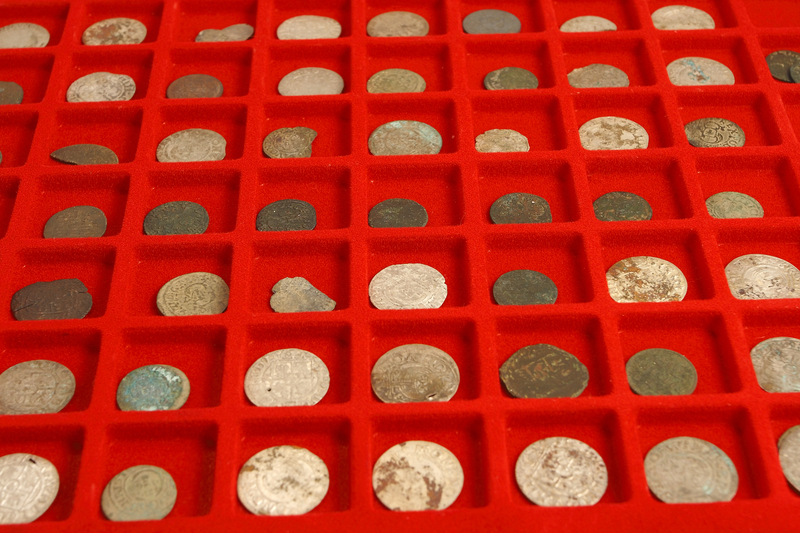Effective Tips for Freezer Storage During Inactivity
Posted on 07/06/2025
Effective Tips for Freezer Storage During Inactivity
Is your freezer going unused for a while? Whether you're embarking on a long trip, renovating your kitchen, or simply facing a temporary period of inactivity, it's essential to store your freezer properly to ensure your appliance and any remaining contents stay in the best condition possible. Proper freezer storage during periods of inactivity not only preserves the longevity of your freezer but also helps avoid unpleasant odors, frost buildup, and even appliance damage. This comprehensive guide outlines proven strategies and effective freezer storage tips during periods when your freezer isn't in regular use.
Why Proper Freezer Storage During Inactivity Matters
When freezers are left unused or are inactive, they can become susceptible to various issues such as unpleasant odors, mold and mildew growth, and mechanical problems. Learning how to properly manage freezer storage during inactivity can help prevent these problems and maintain your freezer in optimal condition, ready for use when needed.
- Prevents Odors: Proper cleaning and air circulation stop foul smells from developing.
- Reduces Mold & Mildew: Dry, clean environments minimize risk.
- Protects Appliance Health: Correct steps ensure your freezer will function smoothly post-inactivity.
- Keeps Leftover Food Safe: Storing or disposing of food correctly prevents spoilage and safety hazards.

Comprehensive Guide to Freezer Storage During Inactivity
1. Decide: Empty or Partially Stocked Freezer?
The first step is deciding whether you'll leave the freezer completely empty or keep a few items inside. Each approach requires a different method for freezer storage during inactivity:
2. Thoroughly Clean and Defrost the Freezer
Whether you're keeping your freezer active or turning it off, give it a deep clean. Cleaning and defrosting:
- Remove all food items and sort through what to keep or discard.
- Unplug the appliance before defrosting.
- Place towels inside to absorb water as ice melts.
- Wipe all surfaces with a baking soda and water solution to eliminate odors.
- Dry thoroughly to stop mold and mildew formation.
For more tips, see our section below on the best cleaning routines for freezers.
3. Ensure Freezer Is Completely Dry
Moisture is the enemy of inactive freezers. Even a small amount can lead to fungal growth and rust. Gently dry all interior and exterior surfaces using clean towels, then allow the freezer to air dry completely for several hours.
4. Leave the Freezer Door Ajar
*If the freezer is off and empty:*
- Prop the door open using a towel, wooden spoon, or specially designed wedge.
- This step is essential to maintain airflow and prevent odors and mold.
- Ensure the door is firmly closed to retain cold air and food safety.
5. Remove or Secure Shelves & Bins
Take out removable racks, shelves, and bins for separate cleaning and drying. If you must leave them inside, make sure they are:
- Thoroughly cleaned and dried
- Left out of the freezer, if possible, to guarantee airflow throughout the cavity
Preserving Food Quality During Temporary Freezer Inactivity
Sometimes you need to store partially full freezers. Here's how to protect their contents:
6. Maximize Food Safety & Organization
- Check expiration dates and remove expired or questionable items.
- Group similar items together and clearly label everything, including date frozen.
- Use airtight containers or vacuum-sealed bags for all items to prevent freezer burn and odors.
- Avoid overloading--ensure there's space for air circulation.
7. Maintain Optimal Temperature
During short periods of inactivity (under 1 month), keep the freezer running around or below 0°F (-18°C). Install a thermometer inside to monitor.
- For longer inactivity, it's best to empty and turn off the freezer, following the steps above.
8. Power Outages and Emergency Considerations
If your freezer will be without power during inactivity:
- Completely empty it if the outage exceeds 24 hours.
- Otherwise, group food together--it stays colder longer.
- Use bags of ice or gel packs for short outages.
Long-Term Freezer Inactivity: Best Practices
If your freezer will be inactive for several weeks or more (such as during extended trips, home renovations, or property vacancy), follow these steps for peace of mind:
9. Disconnect from Power
Always unplug the freezer if you're leaving it unused for an extended period. This prevents electrical hazards and saves energy.
10. Prevent Dust and Pest Intrusion
- Cover the exterior loosely with an old bedsheet or plastic sheeting to prevent dust accumulation.
- Do not block ventilation areas--keep them open for eventual reuse.
- If pests are a concern, ensure the door remains ajar while using a pest deterrent nearby.
11. Use Odor Absorbers
- Place a box of baking soda, activated charcoal, or coffee grounds inside the freezer cavity to absorb lingering smells before and after storage.
- Replace odor absorbers after long inactivity for best results.
12. Check Appliance Manual
Consult your freezer's manual for manufacturer-recommended care when inactive, as some models may have special instructions regarding gasket care, cleaning, or power cycling.
Freezer Storage Tips for Specific Scenarios
Storing your freezer during inactivity may look slightly different depending on your circumstances. Here are tips for some common situations:
Vacant Property or Extended Travel
- Remove all food and unplug the freezer.
- Clean, dry, and prop the door open.
- Visit periodically (if possible) to check for any unexpected issues.
Renovation or Temporary Relocation
- If you must move the freezer, defrost and drain it completely first.
- Keep upright during transport to prevent oil leakage into cooling lines.
- Wait 4-6 hours after moving before plugging it back in to allow refrigerant to settle.
Seasonal Cottage or Vacation Home
- Empty, clean, and prop open when closing up for the season.
- Check gaskets and seals before restarting after extended inactivity to ensure tightness.
Extra Tips and Tricks for Freezer Maintenance During Inactivity
- Check the Freezer Regularly: If feasible, periodically inspect your freezer for signs of moisture, pests, or odor issues.
- Protect the Exterior: Avoid placing heavy items on top of the freezer while inactive, which can impede ventilation or warp the lid.
- Store the Appliance in a Temperature-Stable Environment: Avoid garages or unheated areas where extreme temperatures (hot or cold) could damage internal components.
- Double-Check Power Supply and Settings Before Restarting: Upon returning to regular use, give the appliance time to reach optimal temperature before restocking.
Common Freezer Storage Mistakes to Avoid
The following missteps can compromise your freezer's performance and even your safety:
- Skipping the Cleaning Step: Leaving crumbs, spills, or food debris can produce strong odors and invite pests.
- Leaving Moisture Inside: Always ensure thorough drying before closing up the appliance.
- Forgetting to Leave the Door Ajar: A closed door on a powered-down freezer can create a humid, moldy environment.
- Placing Appliances in Harsh Environments: Exposing freezers to outdoor or extreme temps during inactivity can cause internal and external damage.
- Neglecting Power Disconnection: Leaving an empty freezer plugged in unnecessarily wastes energy and can cause wear.
- Restarting Immediately After Moving: Let refrigerant settle to avoid compressor issues.

Frequently Asked Questions (FAQs) about Freezer Storage During Inactivity
How long can a freezer be left inactive?
As long as it's properly emptied, cleaned, dried, unplugged, and left with the door ajar, a freezer may be left unused indefinitely without issue. Check manufacturer guidance for your specific model.
Can you store anything inside an unused freezer?
It's not recommended. Even clean and dry, non-food items may absorb odors or attract pests if the appliance's air is not circulating.
Do you need to leave the door open if the freezer is empty but plugged in?
No. If the freezer is running, keep the door closed to maintain temperature. Only leave the door open if the freezer is unplugged and empty.
What's the best way to restart a freezer after months of inactivity?
Wipe down the inside, check for any pests or mold, then plug in and allow to reach freezing temperature before adding new food. Inspect the power cord, gaskets, and temperature controls for safety.
Summary: Maximizing Freezer Longevity with Proper Inactive Period Storage
Proper freezer storage during inactivity is more than a matter of keeping your appliance clean--it's essential for preventing damage, odors, and even costly future repairs. By following the effective tips above, you'll ensure your freezer remains safe, odor-free, and ready for future use, no matter how long it sits unused.
- Always clean and thoroughly dry your freezer before inactivity.
- Secure the door open when unplugged to prevent mold growth.
- Remove or safely store food if electricity will be disconnected.
- Consult your appliance manual for any model-specific storage advice.
For more on appliance maintenance and freezer storage strategies, bookmark this guide and share with anyone preparing for a period of appliance inactivity!



